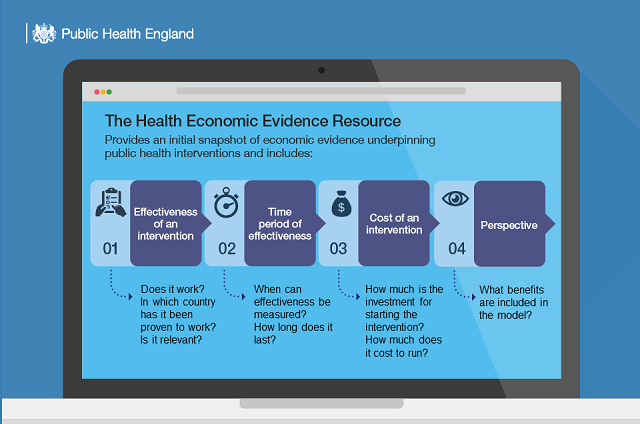
Evidence shows that prevention and early intervention frequently represent good value for money and PHE is committed to helping the system make the economic case for prevention, providing the tools and advice to help local areas make the most out of every pound.
This is why in September 2017 we first launched the Health Economics Evidence Resource (HEER) to help local areas access the health economics evidence they need to make evidence-based investment decisions.
This week we have updated the HEER, adding over 100 interventions to include evidence from some of the latest health economics sources.

What is the HEER?
The HEER is an Excel-based interactive resource that allows users to access a summary of economic evidence across a range of public health areas such as sexual health, drug and alcohol misuse, obesity and smoking.
Over 350 interventions are included, sourced from a mixture of journals, papers and systematic reviews.
The resource is designed to help public health teams and commissioners assess the value of different interventions. Users can:
- Quickly research what cost-effective interventions are at their disposal when dealing with a range of public health issues in their local area
- Filter relevant interventions based on public health area and criteria such as population and timeframe
- Access the underlying papers or ROI tools which underpin economic evidence
- Source relevant PHE return on investment and other health economic tools
The Prioritisation Framework
Local areas can use the updated HEER tool together with the Prioritisation Framework to enable them to put their budget to best use.
We recognise that decision making in local authorities is complex but the Prioritisation Framework, used alongside the HEER, can help local authorities to make evidence-based spending decisions by considering:
- which programmes could offer the greatest value in the future
- the current state of programmes that are being delivered
- the budget currently divided across programmes
- how easy it is for programmes to change
By using this structured approach, local public health leaders will be able to make recommendations on whether to increase, decrease or maintain spend in each programme area.
Topic-specific economic tools
The Health Economics team and other PHE teams have produced a number of resources which can be used to estimate the value of investing in prevention and early diagnosis in specific areas.
These tools collate the best available evidence on costs, savings, and health benefits for specific topic areas.
The interactive tools produced by PHE are:
- Colorectal cancer
- NHS Diabetes Prevention Programme
- End of life care
- Weight management
- Oral health in pre-school children
- Mental health service
- Musculoskeletal conditions
- Movement into employment
- Falls prevention
- Best Start in Life
- Air pollution
- Contraceptive services
- Cardiovascular disease
Local knowledge is key
Public health teams in local systems are best placed to make decisions on their priorities and how best to invest and disinvest and for this reason the Prioritisation Framework, HEER and the various ROI tools listed here are not designed to tell local areas exactly how to spend their public health budget.
However, used together these tools can help to ensure that local decision making is informed by the best available evidence.
Interested in this topic? Learn more in our health economics edition of Health Matters: Making the most of your budgets.
